Morley - Part 05 - The Croft & Brackley Gate
w/e 07 December 2014
All this week's pictures were taken
with a Kodak DX6490

Our objective in this part of the Village Trail is
The Croft and Brackley Gate but first we begin at the entrance
to the Morley Hayes Golf Club and make a short detour into the
neighbouring parish of Smalley.
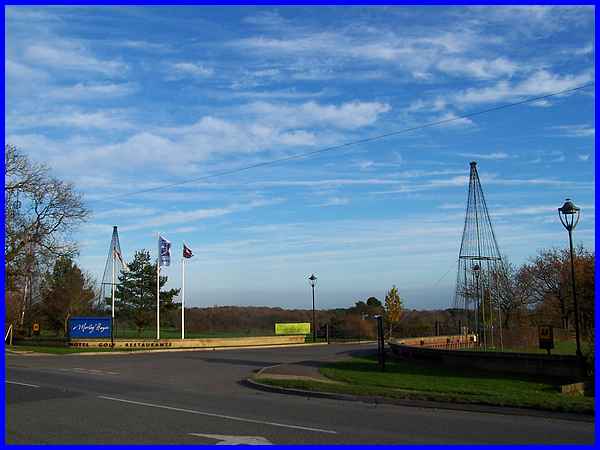
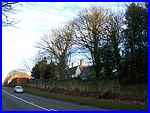 The current
boundary between the two parishes lies just to the north (i.e
left) of the entrance to the Golf, Hotel and Restaurant complex
but it would be remiss of me whilst conducting this tour of Morley
not to stray less than half a mile into Smalley to see Morley
Manor even though it is mostly obscured by a high wall (left).
Presumably before the current boundaries were established the
large house was in the Morley parish being built on the 325 acre
Morley Sacheverall Estate between 1894 and 1899 for H. A. Sacheverall
Bateman. During a Heritage Walk in 2008 I The current
boundary between the two parishes lies just to the north (i.e
left) of the entrance to the Golf, Hotel and Restaurant complex
but it would be remiss of me whilst conducting this tour of Morley
not to stray less than half a mile into Smalley to see Morley
Manor even though it is mostly obscured by a high wall (left).
Presumably before the current boundaries were established the
large house was in the Morley parish being built on the 325 acre
Morley Sacheverall Estate between 1894 and 1899 for H. A. Sacheverall
Bateman. During a Heritage Walk in 2008 I 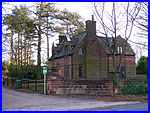 learned that the house was in private ownership
but prior to that it had for many years been owned by the Dr.
Barnardo's charity and was a home to many young people. The gardens
of the Manor contained work by the architect Lutyens of New Delhi. learned that the house was in private ownership
but prior to that it had for many years been owned by the Dr.
Barnardo's charity and was a home to many young people. The gardens
of the Manor contained work by the architect Lutyens of New Delhi.
At the end of the drive to Morley Manor, the Lodge is standing
empty at the moment but at a price in the region of £350,000
the Grade II listed stone cottage (right) is probably beyond
the reach of most first time buyers.
|
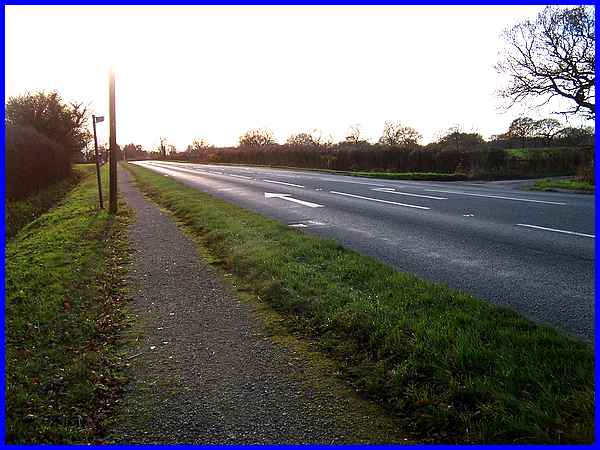
Returning now to Morley our route takes us in the opposite direction
for a short distance from the Morley Hayes entrance towards Morley
Smithy but it was thanks to Dr. Barnardo's that the stretch of
footpath between the Manor and the Smithy was installed as the
staff and children at the Home often enjoyed walks through the
village where they became well-known. The footpath signpost on
the left points across the busy road where traffic moves at high
speed and it is with care that we crossed the road to continue
to the next stage of the walk.
|
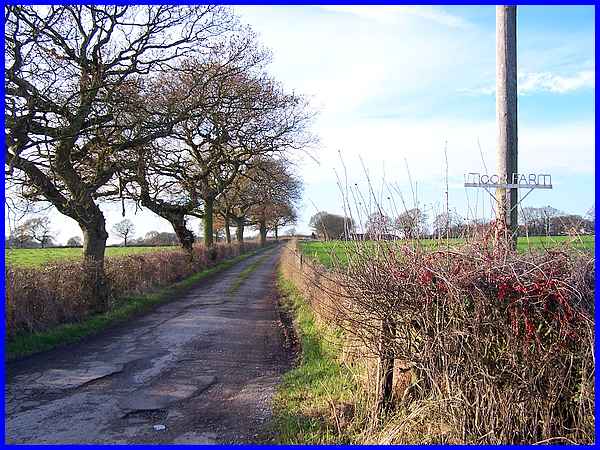
The sign points to the lane which is known locally as "The
Cinder Track" and it leads to Moor Farm.
|
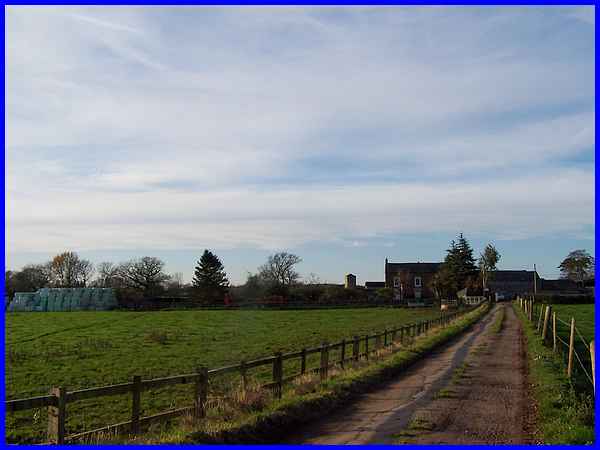
The farm has undergone a name change as it was previously called
Morleymoor Farm and was part of the Sitwell Estate. Originally
thatched, the farmhouse was built in the 1700s but it had a new
roof added together with a new frontage in the Georgian style
in 1823.
|
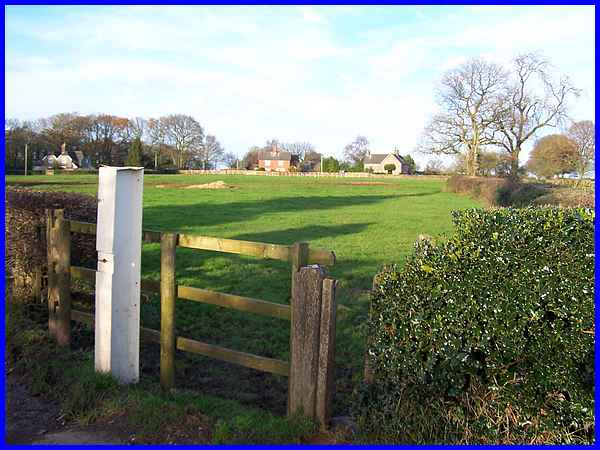
At the farm buildings the lane turns to pass in front of the
farmhouse but on the right there is access to a field and two
footpaths. The first path leads across the field to a cluster
of cottages at The Croft.
|
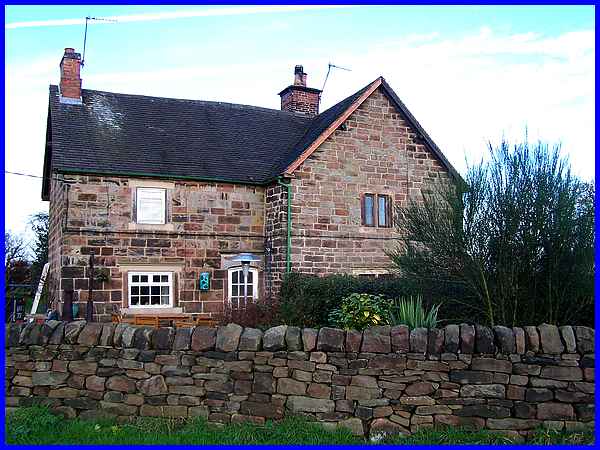
One cottage at the Croft which has now actually been split into
two residences is know locally as Sept's Cottage. This is because
the ancient stone building, Grade II listed, believed to be one
of the oldest in Morley dating from the 17th century, served
as home to the Slack family for at least two generations, one
of whom was Septimus. Noteworthy features are the mullioned windows.
|
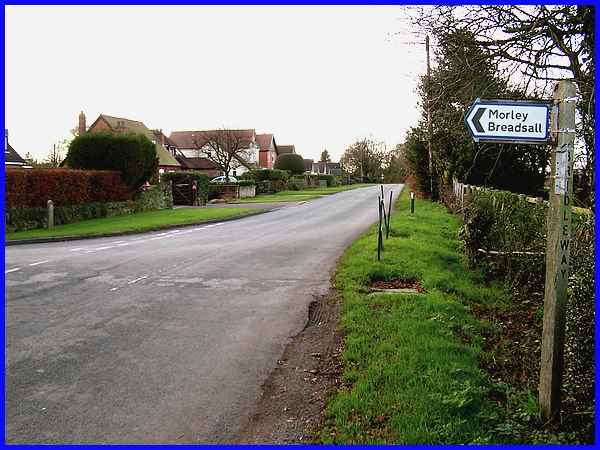
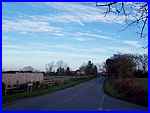 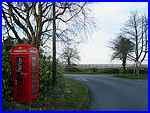 Vehicular access to the cottages
at The Croft is via Cloves Hill (left) and by following the lane
to Cloves Hill and turning left, we reached the road junction
(right & above) at Brackley Gate. Behind the row of detached
residences at Brackley Gate are former quarries which have now
become farmland. The quarries however are forever commemorated
in the name of another farm and the road to Breadsall. Vehicular access to the cottages
at The Croft is via Cloves Hill (left) and by following the lane
to Cloves Hill and turning left, we reached the road junction
(right & above) at Brackley Gate. Behind the row of detached
residences at Brackley Gate are former quarries which have now
become farmland. The quarries however are forever commemorated
in the name of another farm and the road to Breadsall.
|
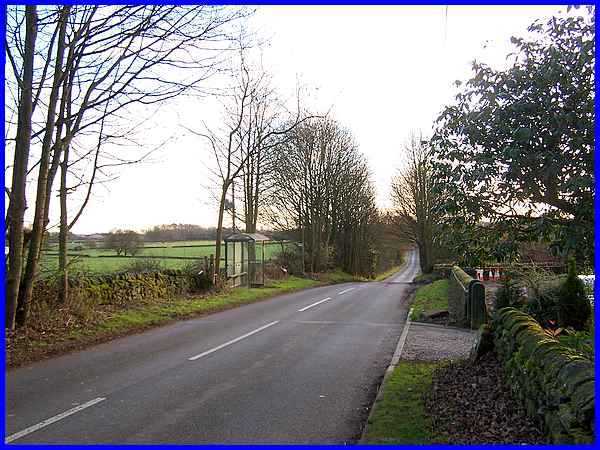
And it is down Quarry Road that we need to go towards Breadsall
as far as the bus stop where there is that second footpath to
take us back to Moor Farm.
|
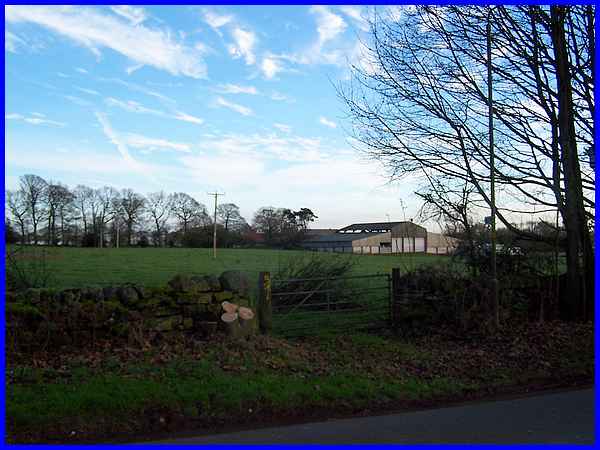
The path across this field to the farm actually crosses the line
of Ryknield Street, the Roman road through Morley from the Little
Chester area of Derby (Derventio) to Yorkshire. Somewhere along
the line through the farmland of Moor Farm, the Roman road was
excavated in 1949. To preserve the road it was recovered and
has not been seen since.
|
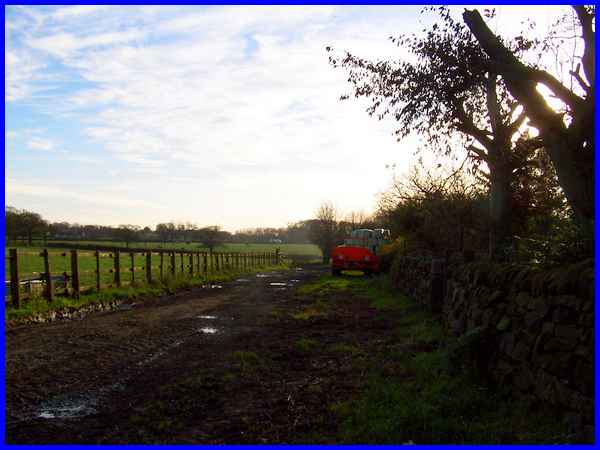
Back at the farm the lane from Morley Hayes continues in front
of the farmhouse to Brick Kiln Lane which can be seen here in
the distance. The track peters out to become a footpath running
more or less parallel to the line of the Roman Road and Quarry
Road and eventually meets Brick Kiln Lane at the clay pits we
saw in Morleuy Smithy part of the Village Trail. It is from there
that we will resume in the next part.
|

